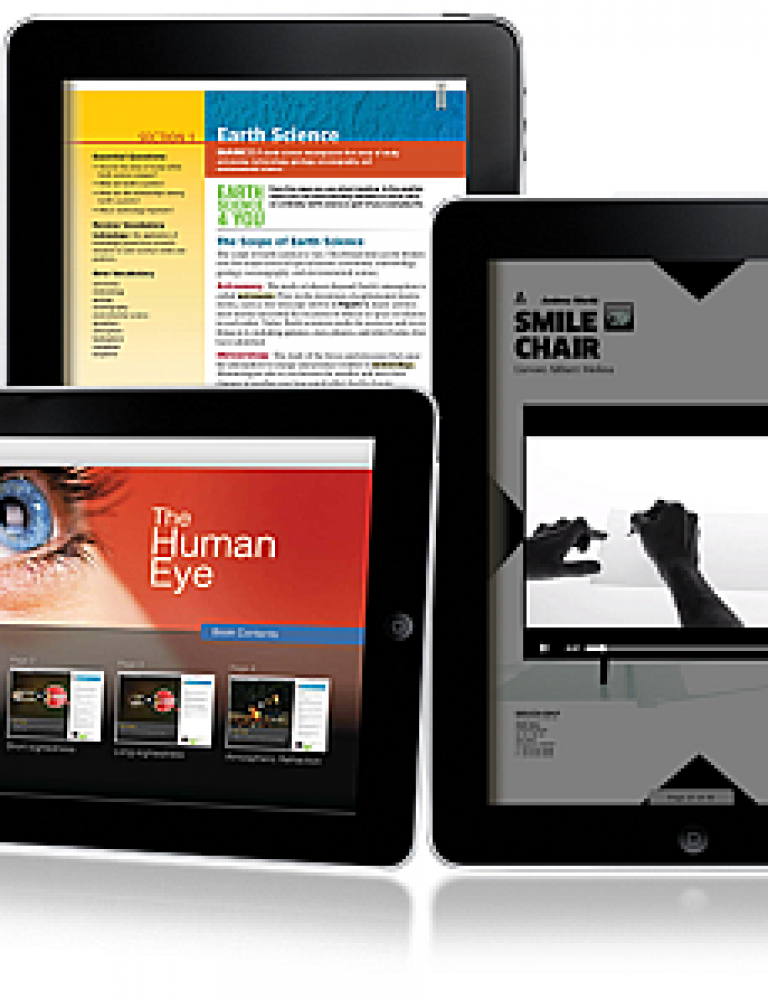In a world where technology continually shapes our daily routines, traditional reading experiences are undergoing a remarkable transformation.
Enter the era of interactive eBooks, where passive reading evolves into dynamic engagement. Imagine flipping through pages infused with multimedia elements, quizzes, and interactive simulations. You immerse yourself in a narrative that transcends the limitations of conventional books.
With interactive eBooks, you’re no longer just a reader. You become an active participant, navigating through layers of content that captivate both mind and imagination.
In this article, we delve into the realm of interactive eBooks. We explore their key features and how they’re revolutionizing the way we consume literature.
Get ready to embark on a journey where words come alive, and stories unfold in ways you never imagined.
Table of Contents:
I. What is an Interactive eBook?
II. Unlocking the Potential: Exploring the Key Features of an Interactive eBook
What is an Interactive eBook?
An interactive eBook is more than just words on a screen. It’s an immersive experience that combines text with multimedia elements like audio, video, and animation.
With interactive eBooks, readers can engage with content in new ways, enhancing understanding and retention. These eBooks are revolutionizing education by providing interactive learning experiences for students. They enable educators to create dynamic and engaging materials.
Unlocking the Potential: Exploring the Key Features of an Interactive eBook
Step into the digital world of interactive eBooks, where innovation meets education in an immersive reading experience.
Let’s delve deeper into the top 9 features that redefine how we engage with digital content, revolutionizing education and beyond.
1. Multimedia Integration
Interactive eBooks redefine the reading landscape by seamlessly integrating textual content with dynamic multimedia elements such as audio, video, and animations. This immersive approach enhances comprehension and helps stimulate multiple senses, making learning more engaging and enjoyable.
With KITABOO’s digital textbook platform, publishers and educators can effortlessly integrate multimedia content into their eBooks. This helps them create dynamic learning experiences that captivate learners’ attention and facilitate a deeper understanding of the material.
2. Read-Aloud Functionality
The inclusion of read-aloud functionality in interactive eBooks offers significant benefits. It caters to learners with visual impairments or those who prefer auditory learning styles.
By enabling the eBook to read aloud the text, KITABOO enhances accessibility and promotes inclusivity in education.
Moreover, read-aloud functionality can also support language learners and struggling readers. It provides pronunciation assistance and reinforces comprehension through auditory input.
With KITABOO’s digital publishing platform, creating eBooks with read-aloud capability is simple. The platform allows publishers to cater to a diverse range of learners and enhance the overall reading experience.
3. Interactive Assessments
educators to gauge student understanding and progress effectively.
By incorporating features such as quizzes, flashcards, and learning objectives, KITABOO empowers educators to create engaging and interactive learning experiences. These features facilitate active participation and knowledge retention.
These assessments provide immediate feedback to students. They also enable educators to track individual performance and adapt instructional strategies accordingly.
With KITABOO’s comprehensive suite of interactive eBook tools like K.AI, publishers can elevate the quality of educational content. These tools support effective teaching and learning practices.
Also Read: What Are the Benefits of Interactive Assessments for Publishers?
4. Cloud-Based Distribution
The adoption of cloud-based distribution for interactive eBooks offers unparalleled accessibility and convenience for readers. It allows them to access their digital content anytime, anywhere, across various devices.
KITABOO’s digital publishing platform leverages cloud technology to facilitate seamless distribution and sharing of eBooks. This eliminates barriers to access and enables readers to engage with content on their preferred devices.
Additionally, cloud-based distribution ensures that content remains up-to-date and accessible. KITABOO’s secure infrastructure protects against unauthorized access and piracy.
By embracing cloud-based distribution with KITABOO, publishers can reach broader audiences and enhance the reach and impact of their educational materials.
5. Offline Access
Despite the increasing prevalence of internet connectivity, offline access remains crucial. This ensures uninterrupted learning experiences, particularly in areas with limited or unreliable internet access.
KITABOO recognizes the importance of offline access for learners. It offers robust solutions that enable users to download eBooks for offline viewing.
This feature not only enhances accessibility but also supports mobile learning initiatives and remote education programs.
With KITABOO’s offline access capabilities, publishers can ensure that their content remains accessible and relevant in diverse learning environments. This empowers learners to engage with educational materials anytime, anywhere.
6. Personalized Learning Analytics
The integration of personalized learning analytics within interactive eBooks offers valuable insights. Publishers and educators can gain insights into student engagement, learning behaviors, and performance.
KITABOO’s analytics tools provide comprehensive data on reader interactions, including time spent on each page, quiz scores, and content preferences.
This data-driven approach empowers educators to personalize learning experiences. It helps them identify areas for improvement and tailor instruction to meet individual student needs effectively.
By leveraging KITABOO’s advanced analytics capabilities, publishers can optimize content delivery. They can enhance learner outcomes and drive continuous improvement in educational content and pedagogy.
7. White Labeling
Branding is an essential aspect of establishing credibility and recognition in the digital publishing landscape. KITABOO’s white labeling feature allows publishers to customize the interface and branding of their eBooks to reflect their unique identity and brand image.
By incorporating logos, color schemes, and branding elements, publishers can create a cohesive and immersive reading experience. This reinforces their brand identity and fosters reader loyalty.
With KITABOO’s white labeling capabilities, publishers can differentiate their eBooks in a crowded marketplace. They can also build brand equity and establish themselves as leaders in their respective domains.
8. DRM Protection
Digital rights management (DRM) is critical for safeguarding intellectual property rights and preventing unauthorized distribution and piracy of digital content.
KITABOO’s DRM protection features utilize industry-standard encryption and security protocols to ensure that eBooks are protected against unauthorized access and piracy.
By implementing robust DRM measures, publishers can maintain control over content distribution and use. This helps protect revenue streams and safeguard the integrity of their publishing ecosystem.
With KITABOO’s comprehensive DRM solutions, publishers can confidently distribute their eBooks, knowing that their content is secure.
9. Integration with Existing Systems
Seamless integration with existing learning management systems (LMS) is essential for streamlining content delivery, administration, and analytics in educational settings.
KITABOO’s integration capabilities enable publishers to seamlessly integrate interactive eBooks with their existing LMS infrastructure. This facilitates centralized content management, user authentication, and analytics.
By integrating with KITABOO, publishers can leverage existing investments in LMS technology. This enhances the accessibility and usability of their educational content and streamlines administrative workflows for educators and learners.
With KITABOO’s flexible integration options, publishers can maximize the value of their digital content. They can deliver personalized, engaging learning experiences across diverse educational environments.
Wrapping Up!
In conclusion, interactive eBooks represent a groundbreaking advancement in the realm of digital publishing, offering a dynamic and immersive reading experience.
With features like multimedia integration, interactive assessments, and offline access, these eBooks cater to diverse learning styles and environments.
KITABOO’s innovative platform empowers publishers and educators to create and distribute interactive educational content seamlessly.
By leveraging KITABOO’s capabilities, educators can enhance engagement, improve learning outcomes, and adapt to the evolving needs of modern learners.
Take the next step in transforming education—explore KITABOO’s digital publishing solutions today!
Revolutionize the way you create and consume educational content.
Connect with us now!
Discover How An Ebook Conversion, Publishing & Distribution Platform Can Help You
Kitaboo is a cloud-based content platform to create-publish & securely distribute interactive mobile-ready ebooks.
You May Also Like









